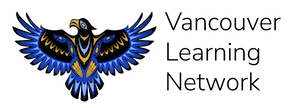Science 10
Science 10 Course Overview
Big Ideas
DNA is the basis for the diversity of living things. | Energy change is required as atoms rearrange in chemical processes. | Energy is conserved, and its transformation can affect living things and the environment. | The formation of the universe can be explained by the big bang theory. |
From: https://curriculum.gov.bc.ca/curriculum/science/10/core
Introduction
The processes of science include skill such as observing, classifying, predicting, inferring, and hypothesizing. Scientific reasoning, critical thinking, and decision making are also part of that foundation. These will mostly be developed as part of work related to the other parts of your life. Life Sciences embraces a range of biology topics, moving from the microscopic level to the macroscopic level. Physical Sciences incorporates a series of topics that give students a foundation for understanding Physics (via a focus on motion) and Chemistry (via a focus on atoms, elements, and chemical reactions). Earth and Space Science is a complement to the study of topics in other areas of science and gives students an opportunity to examine some of the macroscopic applications of scientific principles and technologies in the study of terrestrial and extra-terrestrial systems.
Where does this course fit?
- Prerequisites: Science 9
- Graduation Status:Science 10 is required for graduation
Course Materials
- All materials are provided in the course online.
Brief Outline
Unit | Description |
1. Physics | Physics is a general study on how the world works. Energy surrounds us, everywhere! It’s in the lifting of a book, the turning of a dial, or the spinning of a wheel. It’s in the motion of walking down the street or the dropping of a ball. In this module, we dive deep into the relationship between different types of energy, namely potential energy and kinetic energy, and inquire as to how energy is present in some of the most common things around us! Together we will build a book that outlines how energy is conserved in ordinary objects, like the piece of paper or screen you are looking at now! |
2. Biology | Biology is the study of living things. Do you wonder why things in nature are the way they are? Do you wonder why some plants or animals can live in hot, humid areas of the world and some live in cool, dry areas? Genetics is the foundation for the diversity of all living things and in this course, you'll set off on a virtual Student Exchange Program to Brazil to find out more! You’ll learn from the locals how the topic of genetics impacts gardens, farms and the Amazon Rainforest. You’ll also learn about students’ various local concerns and how they’re getting involved to take action! After touring the country, marvelling at the rich diversity, you’ll "travel" home to research and create an action plan of your own! |
3. Chemistry | Chemistry is the study of matter. Flux, motion, movement, alteration, transformation. All these words apply to matter. Matter is dynamic and can undergo dramatic changes! Carbon dioxide and water undergo a chemical change to produce wood, leaves, fruit and much more, and nitrogen and hydrogen can be reacted industrially to produce the fertilizer needed to feed billions of people! Is a chemical change random? How can we make sense of it and use chemical change to our advantage? We’ll be looking at this question from the perspective of modern atomic theory, chemical kinetics, and thermodynamics. Atoms are in a sort of dance, able to switch their partners to form new molecules, which can switch atoms with other molecules to make other new molecules! In this module, you’ll learn about different types of chemical reactions you experience every day, including brushing your teeth and nuclear fusion (believe it or not), and lay a solid foundation for chemistry literacy in a reactive world. |
4. Earth and Space Science | Earth and Space Science is the study of how Earth/Space formed and how it changes. Do you ever wonder how did the universe began? How do scientists propose its beginning, how do other historical models compare to what we understand today? And what do models have to do with any of it? Join us as we get hands-on, creating models, understanding models, and reading about models in relation to space, history and many different aspects of science all while learning about different objects in space and their relation and effects on Earth. |
Assessment Percentage Breakdown
Assessment Type | Percentage of the Course |
Assignments and Projects | 42 |
Online Quizzes (open book) | 18 |
Test 1 (Biology or Earch and Space Science) | 20 |
Test 2 (Physics or Chemistry) | 20 |
You have up to a year to complete your course.

